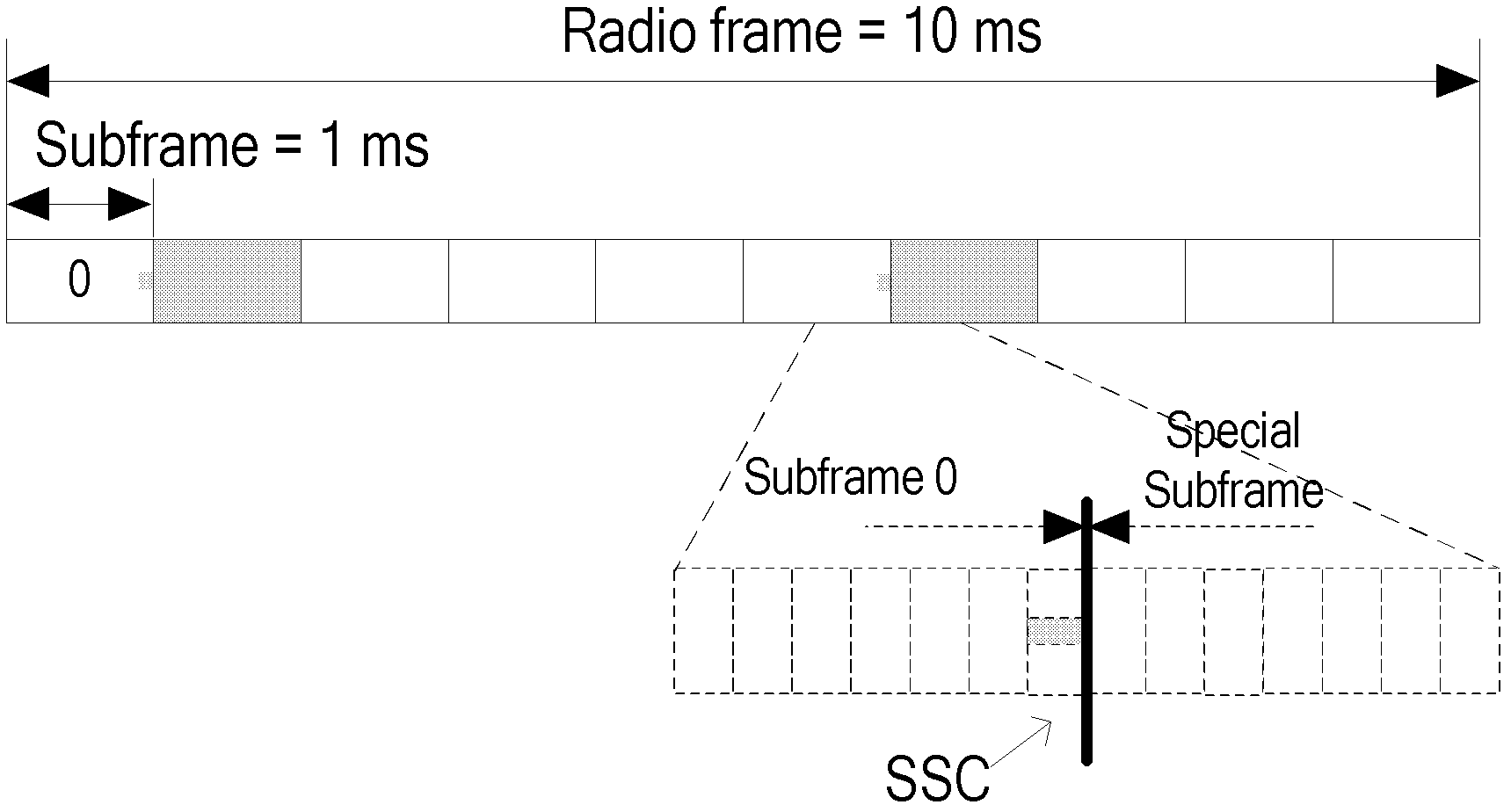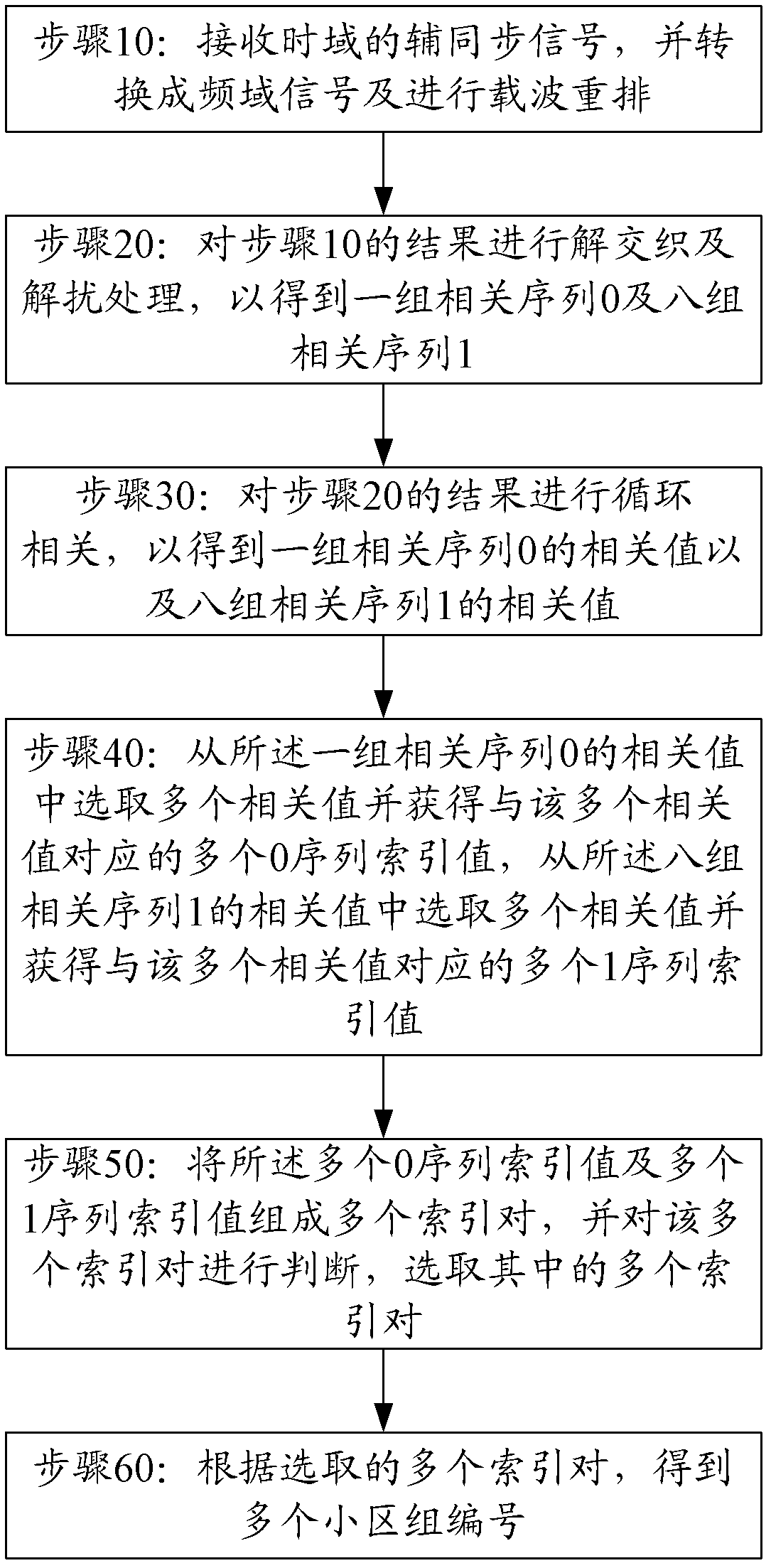Method and device for detecting secondary synchronization code of long term evolution (LTE) system
A secondary synchronization code and detection method technology, applied in electrical components, wireless communication, communication between multiple stations, etc., can solve the problem of low cell detection efficiency and achieve the effect of improving cell detection efficiency
- Summary
- Abstract
- Description
- Claims
- Application Information
AI Technical Summary
Problems solved by technology
Method used
Image
Examples
Embodiment 1
[0054] Please refer to image 3 , which is a schematic flowchart of a method for detecting a secondary synchronization code in an LTE system according to Embodiment 1 of the present invention. like image 3 As shown, the LTE system secondary synchronization code detection method specifically includes the following steps:
[0055] Step 10: Receive the secondary synchronization signal in the time domain, convert it into a frequency domain signal and perform carrier rearrangement.
[0056] Step 20: Perform deinterleaving and descrambling processing on the result of step 10 to obtain a set of correlation sequences 0 and eight sets of correlation sequences 1.
[0057] Step 30: Perform circular correlation on the results of step 20 to obtain a set of correlation values of correlation sequence 0 and eight groups of correlation values of correlation sequence 1.
[0058] Wherein, step 10, step 20 and step 30 are prior art, and the present application will not repeat them here. ...
Embodiment 2
[0130] This embodiment provides a device for implementing the method for detecting the secondary synchronization code in the LTE system described in Embodiment 1. Please refer to Figure 4 , which is a schematic block diagram of an apparatus for detecting a secondary synchronization code in an LTE system according to Embodiment 2 of the present invention. like Figure 4 As shown, the detection device 40 includes:
[0131] The frequency domain conversion and carrier rearrangement module 410 is used to receive the secondary synchronization signal in the time domain, convert it into a frequency domain signal and perform carrier rearrangement;
[0132] The deinterleaving and descrambling module 420 is used to perform deinterleaving and descrambling processing on the output of the frequency domain transformation and carrier rearrangement module 410, so as to obtain a set of correlation sequences 0 and eight groups of correlation sequences 1;
[0133] The correlation module 430 i...
PUM
 Login to View More
Login to View More Abstract
Description
Claims
Application Information
 Login to View More
Login to View More - R&D
- Intellectual Property
- Life Sciences
- Materials
- Tech Scout
- Unparalleled Data Quality
- Higher Quality Content
- 60% Fewer Hallucinations
Browse by: Latest US Patents, China's latest patents, Technical Efficacy Thesaurus, Application Domain, Technology Topic, Popular Technical Reports.
© 2025 PatSnap. All rights reserved.Legal|Privacy policy|Modern Slavery Act Transparency Statement|Sitemap|About US| Contact US: help@patsnap.com



